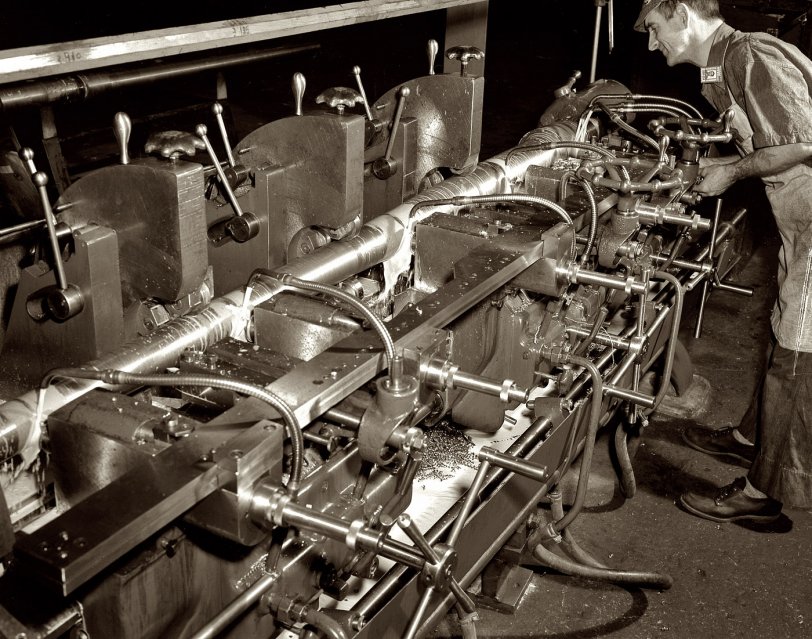


Framed or unframed, desk size to sofa size, printed by us in Arizona and Alabama since 2007. Explore now.
Shorpy is funded by you. Patreon contributors get an ad-free experience.
Learn more.

- Baldwin 62303
- Baldwin VO-1000
- Cold
- No expense spared
- Tough Guys
- Lost in Toyland
- And without gloves
- If I were a blindfolded time traveler
- Smoke Consumer Also Cooks
- Oh that stove!
- Possibly still there?
- What?!?
- $100 Reward
- Freeze Frame
- Texas Flyer wanted
- Just a Year Too Soon
- WWII -- Replacing men with women at the railroad crossing.
- Yes, Icing
- You kids drive me nuts!
- NOT An Easy Job
- I wonder
- Just add window boxes
- Icing Platform?
- Indiana Harbor Belt abides
- Freezing haze
- Corrections (for those who care)
- C&NW at Nelson
- Fallen Flags
- A dangerous job made worse
- Water Stop
Print Emporium
Highland Park: 1942

1942. Chrysler Corporation plant at Highland Park, Detroit. "Applying automobile production methods to machining of 40 mm. anti-aircraft gun barrels in a former automobile plant. Five cutting instruments work at the same time. Under the old single-operation methods of gunmaking, only one of these could work at one time. Automobile workers are proud of the improvement." Medium format safety negative by Alfred Palmer for the Office of War Information. View full size.
CNC
Actually rather far along on the road to CNC. The cutters are being guided by the thick template bar running across the front of the machine. You can see a roller follower contacting the template in front of each cutter. The next step was the optical photocell tracer, then NC, then CNC.
The photo also raises an odd question: how precise does the *outside* of a gun barrel need to be, other than at the mounting points? Looking at late-war Japanese weapons, the answer is "not very," although they were also compromised by poor metallurgy that made them a danger to their users. In all likelihood, the Allied requirement was that it looked good enough to encourage sailors to maintain them, and that paint would go on well enough to protect from salt accumulation.
I must ask
where is the operator's safety goggles and ear protection?
How things change
I have been a machinist/tool and die maker my whole life. This is how we used to do things. Now it is done with computer numerical controlled (CNC) tools. I am still in the business and own my own shop equipped with several CNC machines. People that call themselves machinists today wouldn't have a clue how to operate anything like this. This is a dying skill.
Of note... the coolant that is flowing onto the tools looks like milk. It is actually a soluble oil. Mixed with water in the right ratio served the purpose quite well back then. It had an unmistakable odor. Not at all offensive until bacteria started growing in it. Then it got quite rancid. Now the coolants are synthetic chemicals. The smell of soluble oil on a hot tool can bring back a lot of memories to me.
























On Shorpy:
Today’s Top 5